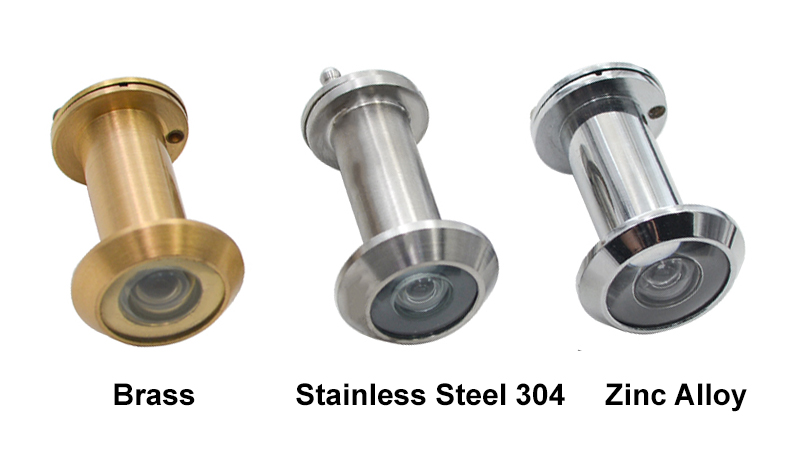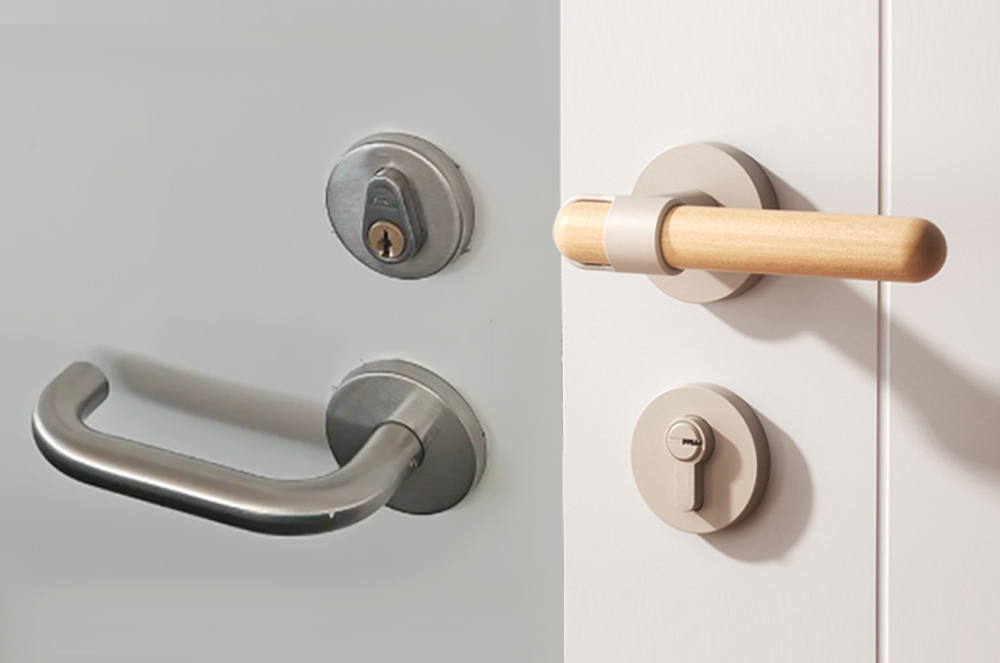What is a Door Viewer?
A door viewer, commonly known as a peephole, is a small optical device installed in a door that allows you to see who is on the other side without opening the door. It’s a basic but essential component in home and commercial security.
Key Features to Consider When Choosing a Door Viewer
-
Material of the Body
-
Viewing Angle
-
Lens Material
-
Installation Diameter & Door Thickness
Material Comparison: Stainless Steel vs Brass vs Zinc Alloy
Stainless Steel Door Viewer
-
-
-
✅ Corrosion-resistant and durable
-
✅ Ideal for coastal or humid environments
-
✅ High-end appearance and solid feel
-
❗ Usually higher cost
-
-
Brass Door Viewer
-
-
-
✅ Excellent mechanical strength
-
✅ Good anti-rust properties
-
✅ Used widely in high-end security hardware
-
❗ May oxidize over time without proper treatment
-
-
Zinc Alloy Door Viewer
-
-
-
✅ Affordable price, widely used in residential projects
-
✅ Acceptable appearance with plating
-
❗ Weaker in corrosion resistance and long-term durability
-
-
Lens Material: Glass or Plastic?
| Type | Pros | Cons |
|---|---|---|
| Glass Lens | Clearer image, scratch-resistant | Heavier, more costly |
| Plastic Lens | Lightweight, low cost | Prone to scratches, aging |
Viewing Angle: Why It Matters
A typical door viewer offers a 160° to 220° viewing angle. The wider the angle, the larger the area you can monitor.
-
-
-
160°: Basic viewing, suitable for narrow hallways
-
200°+: Wide-angle, ideal for apartments or public access doors
-
-
Installation Diameter & Door Thickness
When choosing a door viewer, make sure it matches both the installation hole diameter and the door thickness.
| Specification | Typical Range | Note |
|---|---|---|
| Hole Diameter | 12mm – 16mm (Most common: 14mm) | Measure the diameter of the existing holes in the door before selection |
| Door Thickness | 35mm – 55mm (Customizable for 25mm–80mm) | The thicker the door, the longer the thread length of the cat’s eye. |
Conclusion: How to Choose the Right Door Viewer
| Application Scenario | Recommended Material & Specs |
|---|---|
| High-end project / Villa | Stainless steel body + Glass lens + 200° wide view |
| General home use | Brass or zinc alloy + Glass/plastic lens |
| Cost-sensitive projects | Zinc alloy + Plastic lens + Standard angle (160°) |
📌 Looking for a high-quality stainless steel door viewer with customizable sizes and finishes? Contact us today – we are a professional manufacturing factory with strong OEM capability.
MARCHRY HARDWARE
WEBSITE: www.marchry.com
MAIN PRODUCTS: Door handle, Door knob, Pull handle, Door stopper, Door lock, Toilet partition hardware, Furniture handle, etc.






